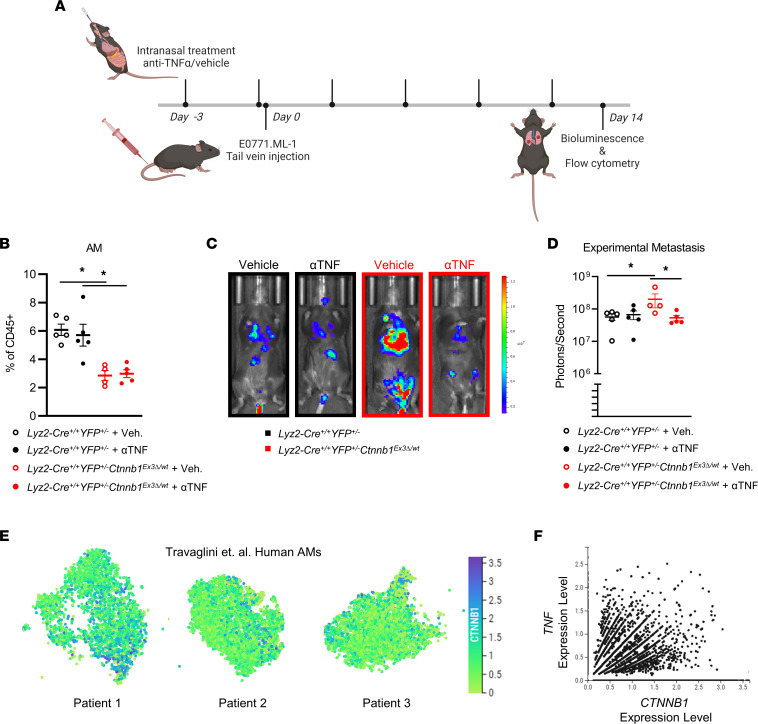Figure 6. Intranasal delivery of anti–TNF-α neutralizing antibody rescues the pro-metastatic effects of AM β-catenin activation, and TNF expression correlates with CTNNB1 in human AMs.
(A) Schematic of intranasal anti–TNF-α treatments in Lyz2-Cre+/+ YFP+/– Ctnnb1Ex3Δ/wt or Lyz2-Cre+/+ YFP+/– hosts injected with E0771.ML-1 via tail vein 36 hours after treatment. (B) Relative abundance of CD45+Ly6G–CD24–CD64+CD11bloCD11c+ AMs of E0771.ML-1 tumor–bearing mice described in A. (C) Bioluminescence images, representative of 2 independent experiments and (D) quantification of data at endpoint represented. (E) Expression of CTNNB1 in human AMs from Travaglini et al. by scRNA-Seq (European Genome-phenome Archive [EGA], EGAS00001004344); n = 3. (F) Scatterplot of TNF and CTNNB1 expression from D; n = 3, pooled; positive Pearson correlation P = 0.0470. (B and D) The mean ± SEM values are shown and represent 4–5 individual mice. Statistical analysis is based on 1-way ANOVA with the Holm-Šídák correction applied for multiple comparisons (B and D); * = P < 0.05.

